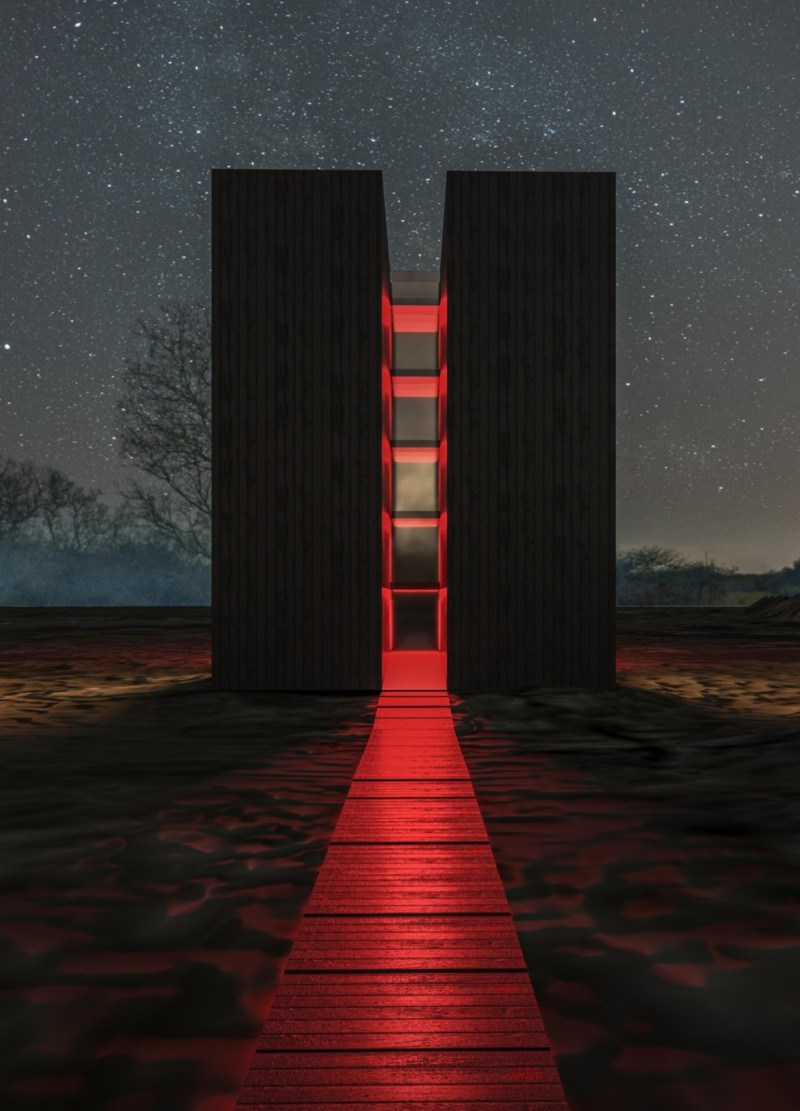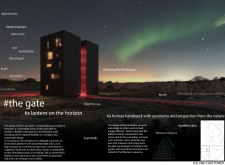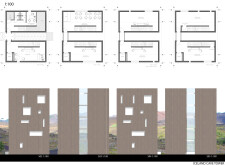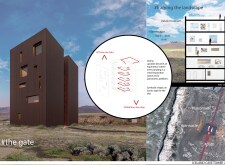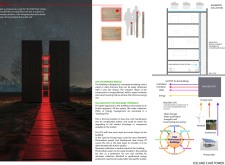5 key facts about this project
The Iceland Cave Tower features a unique design that stands out in its natural setting. Situated in an open landscape, it serves multiple functions, including an observation point, exhibition area, tourist information center, and café. The design prioritizes accessibility and comfort, allowing visitors to interact with both the structure and its surroundings.
Material Choices
Wood and steel are key materials in the tower's construction. Wood adds warmth and a natural feel, while steel provides the necessary strength to support the design. Together, they create a sturdy yet inviting space that aligns with the project's focus on sustainability. The combination of these materials helps to facilitate a design that is both functional and visually appealing.
Visitor Experience
The layout encourages visitors to journey upward through the building. Each level offers small exhibition spaces and scenic views, allowing guests to pause and enjoy their surroundings. This vertical progression creates a connection with the landscape. Each landing provides a moment for reflection and appreciation of the natural beauty outside.
Sustainability Measures
Sustainability is an important aspect of the tower's design. The compact shape and efficient use of energy are essential features. A system that manages water collection, heating, and energy use is integrated into the structure. Renewable energy sources, such as wind and solar power, are also considered to meet the building's energy needs.
Design Integration
The tower is intended as a temporary structure, which reduces its impact on the environment. This choice emphasizes the building's relationship with the landscape, blending its form with natural features. The careful proportions and inclusion of rainwater collection systems highlight a commitment to eco-friendliness, creating a space that interacts thoughtfully with its surroundings. Each design detail serves to enhance the functional and aesthetic qualities, establishing a clear connection to nature.


